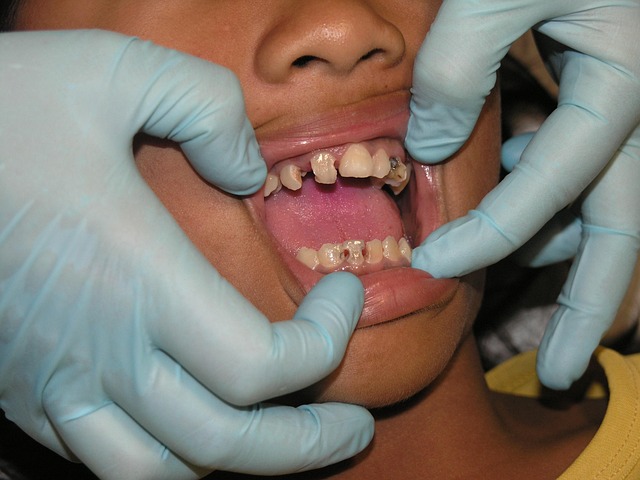Post-Traumatic Stress Disorder (PTSD) is a severe mental health condition caused by traumatic events, affecting daily life and communities. Effective PTSD treatment includes therapies like Cognitive Behavioral Therapy (CBT), Eye Movement Desensitization and Reprocessing (EMDR), exposure therapy, mindfulness, and group therapy. These approaches help individuals process trauma, change negative thought patterns, reduce symptoms, regain control, and improve overall well-being. Each method offers a step-by-step guide for healing, fostering understanding, and building resilience against PTSD's broad impact.
Trauma can leave deep scars, affecting not just our past but our present and future. Fortunately, various effective therapy techniques exist to help individuals recover from post-traumatic stress disorder (PTSD). This article delves into powerful approaches for alleviating trauma, including Cognitive Behavioral Therapy (CBT), Eye Movement Desensitization and Reprocessing (EMDR), Exposure Therapy, Mindfulness and Meditation, and Group Therapy. By exploring these PTSD treatment methods, you’ll gain insights into healing journeys and find hope on the road to recovery.
Understanding PTSD and Its Impact

Post-Traumatic Stress Disorder (PTSD) is a mental health condition that can arise after someone experiences or witnesses a traumatic event. It’s more than just feeling scared or anxious; PTSD can significantly impact an individual’s daily life, relationships, and overall well-being. Symptoms often include flashbacks, nightmares, severe anxiety, and uncontrollable thoughts about the trauma. These reoccuring memories and emotions can be distressing and disruptive, making it challenging for individuals to function normally.
The impact of PTSD extends beyond the person who experienced the trauma directly. It can affect loved ones and community members as well, creating a ripple effect that requires understanding and support. Effective PTSD treatment is crucial in helping individuals process and overcome these traumatic memories, restore their sense of safety, and reclaim control over their lives. Through various therapy techniques, such as exposure therapy, cognitive behavioral therapy (CBT), and eye movement desensitization and reprocessing (EMDR), individuals can find relief from the gripping effects of PTSD.
Cognitive Behavioral Therapy (CBT): A Step-by-Step Guide

Cognitive Behavioral Therapy (CBT) is a structured and goal-oriented approach to PTSD treatment, focusing on identifying and changing negative thought patterns and behaviors associated with traumatic memories. The process begins by educating individuals about trauma and its impact on mental health. Therapists help clients recognize triggers and develop coping strategies to manage intense emotions.
Through a step-by-step guide, CBT encourages patients to challenge distorted beliefs formed during the trauma. This involves exploring thoughts, feelings, and behaviors in a safe environment. Therapists support clients in reframing negative perspectives and replacing them with more balanced, realistic views. Each session builds upon the previous one, fostering a deeper understanding of oneself and progressive healing from PTSD symptoms.
Eye Movement Desensitization and Reprocessing (EMDR) Technique

Eye Movement Desensitization and Reprocessing (EMDR) is a powerful therapy technique designed to help individuals process traumatic memories and reduce symptoms associated with Post-Traumatic Stress Disorder (PTSD). This approach combines guided eye movements, or other bilateral stimulation methods, with recall of the distressing event. As the client focuses on the memory, the therapist guides them through specific eye movements, helping to desensitize the individual to the trauma while reprocessing and reframing the associated beliefs and emotions.
EMDR therapy has gained recognition as an effective PTSD treatment, as it enables clients to work through their traumatic experiences in a safe and controlled manner. By desensitizing individuals to the disturbing memories, EMDR allows them to gain perspective and reduce the emotional impact of the trauma, ultimately leading to improved mental health and well-being.
Exposure Therapy: Facing Fears Head-On

Exposure therapy is a powerful technique at the forefront of PTSD treatment, empowering individuals to confront and overcome their traumatic memories. This approach involves gradually exposing the person to the fearful situation or reminders of the trauma in a safe and controlled environment. By facing their fears head-on, patients can learn to manage their reactions and reduce the intense emotions associated with traumatic memories.
The process typically starts with identifying specific triggers related to the trauma. Therapists then create a hierarchical list of these triggers, starting from the least frightening to the most distressing. Through careful exposure to these triggers over several sessions, patients can gradually desensitize themselves and gain a sense of control. This technique has proven effective in helping individuals suffering from PTSD, allowing them to lead more fulfilling lives by managing their symptoms and regaining a sense of safety.
Mindfulness and Meditation for Trauma Healing

Mindfulness and meditation are powerful tools in the journey towards trauma healing, especially for those seeking PTSD treatment. These practices encourage individuals to focus on the present moment, reducing the grip of intrusive memories and flashbacks that often accompany traumatic experiences. By cultivating awareness without judgment, individuals can develop a deeper sense of calm and resilience, which is essential for managing the emotional responses triggered by traumatic reminders.
Through regular meditation, people with trauma can learn to observe their thoughts and emotions without reacting impulsively. This practice strengthens self-regulation skills, enabling better coping mechanisms when faced with distressing memories. Mindfulness techniques, in particular, have shown promising results in helping individuals process and integrate traumatic experiences, fostering a sense of safety and emotional balance in their daily lives.
Group Therapy and Support Networks

Group therapy offers a powerful environment for individuals dealing with trauma and its aftermath, especially those suffering from Post-Traumatic Stress Disorder (PTSD). In this setting, people connect and share their experiences, fostering a sense of community and understanding. It provides a safe space to express emotions, fears, and memories related to traumatic events, which can be therapeutic in itself. The support and validation received from peers who have faced similar challenges can significantly contribute to the healing process, breaking down feelings of isolation often associated with trauma.
Support networks, both within group therapy sessions and outside them, play a pivotal role in PTSD treatment. These networks ensure continuity of care and provide individuals with ongoing emotional support. Whether it’s through peer-to-peer connections or mentorship from trained professionals, having a reliable support system can help manage symptoms, offer coping strategies, and promote resilience, ultimately aiding in long-term recovery.
